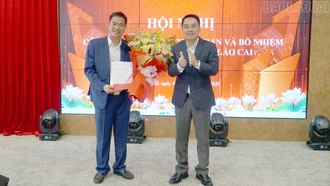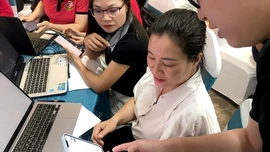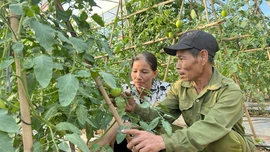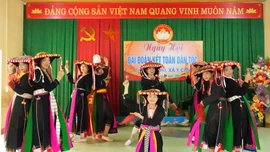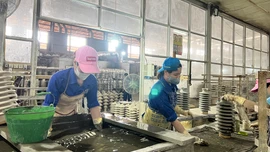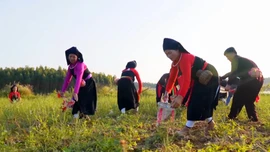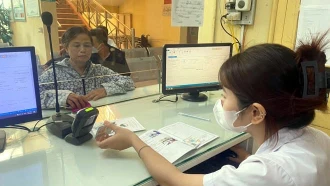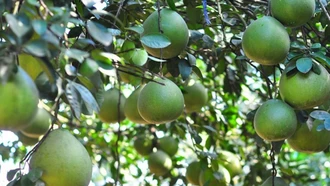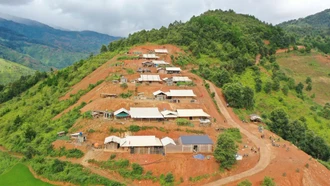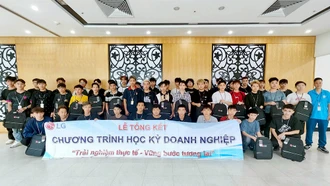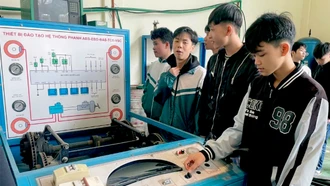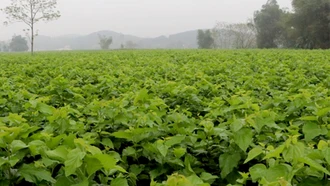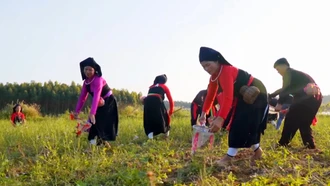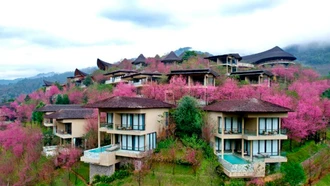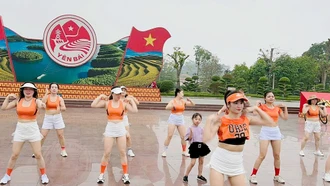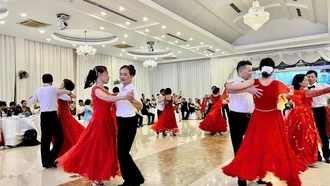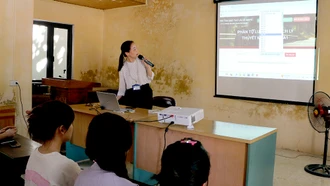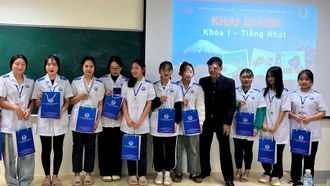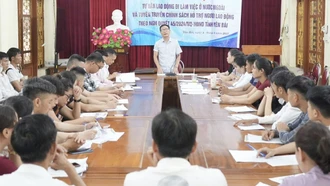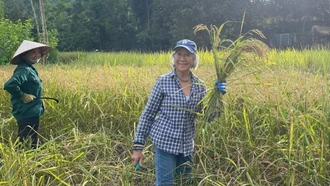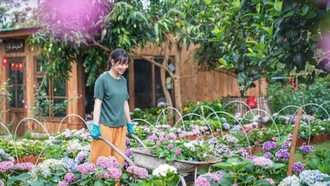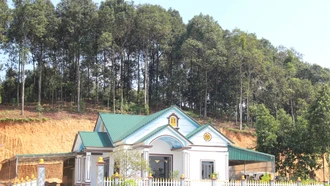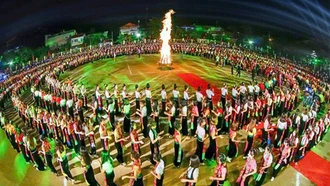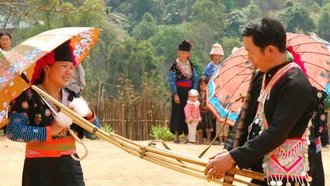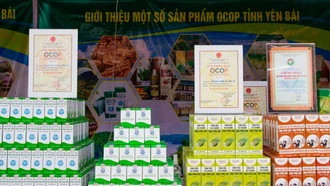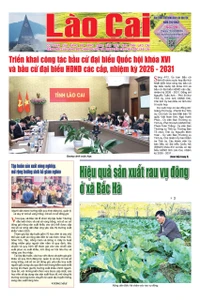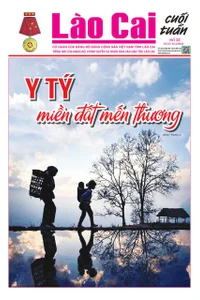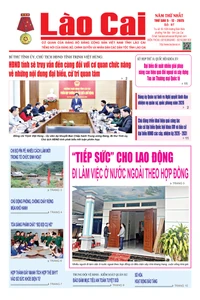Many people believe that to understand the life, culture, and customs of a certain region or village, just go to its market. Because the market fully reflects the face of the region’s socio-economic life and culture. It is a miniature picture that vividly recreates the cultural life of each ethnic group. As a locality with a large number of ethnic minority people and rich cultural traditions, Luc Yen - the Gem Land preserves these cultural values through rural markets, where visitors can experience and better understand the colorful identity of Luc Yen via traditional clothing of the Dao, Tay, and Nung peoples, and simple, traditional products made by the locals themselves.
A distinctive feature of rural markets is their self-sufficient nature. Most of the goods sold at the market are grown or made by the local people themselves. Nowadays, each rural market also has more professional small traders, which makes products more diverse and better meet the consumption needs of the people. However, the inherent uniqueness of the rural market still remains. Local people go to the market sometimes with just a couple of chung cake, banana cake, a few woven baskets, a scarf, a piece of brocade fabric, some betel nuts, a dozen eggs, a chicken, or a bunch of homegrown vegetables. People bring to the market what they have and buy what they need. Just like that, the market-goers sometimes act as both sellers and buyers. This rarely happens in city markets and therefore creates a unique feature for traditional rural markets.
For the Tay people in Mai Son commune, Luc Yen district, going to the market in their ethnic costumes and bringing traditional products such as cakes, clothes, tools, weaving and embroidery items is a joy and happiness during market days.
Ms. Tang Thi Hoa from Lam Thuong commune shared cheerfully: "We bring to the rural market specialties of our homeland such as purple sweet potatoes, capon chickens, along with traditional costumes. Coming here is not only about selling, but also enjoying the lively crowd and introducing our Luc Yen homeland to more people.â€
In order to preserve, protect and develop traditional crafts, promote the consumption of signature local products, introduce traditional costumes, cuisine, and the beautiful customs of the Tay people while at the same time preserving cultural values and promoting community tourism - the Mai Son commune established the "Mai Son Rural Market†in 2022. The commune promoted and encouraged local people to wear traditional Tay costumes when going to the market and bring signature products to sell. In addition, the commune has rearranged and decorated the product display areas in a simple, rustic, and friendly manner, which has been well received by the people and has attracted visitors from outside the commune to visit and experience. The Mai Son rural market is held twice a week, on Wednesdays and Saturdays, in combination with traditional market fairs. Since the market was formed, many traditional crafts and signature products of the Tay people have been restored, developed, and known by more people.
Ms. Nong Thi Ve, living in Son Ha hamlet, Mai Son commune, has always been deeply concerned with preserving and teaching Tay cultural beauty to younger generations. Realizing that many young people nowadays no longer know how to wrap their hair or wear the traditional headscarf, she invented a ready-made hair wrap product, making it easier for young people to use while still preserving the cultural identity. Ms. Ve shared: "On market days, I regularly go to the market to make and sell this product. Many customers from within the commune as well as neighboring areas such as Lam Thuong, Khanh Thien, Yen Thang, and Minh Xuan come to buy it.â€
Meanwhile, Ms. Hoang Thi Hanh has nearly ten years of experience making black chung cakes - a traditional food only made by the Tay people. Previously, she only made them during the Lunar New Year, mainly for her family and neighbors. However, since the rural market was restored in Mai Son commune, her black chung cakes have gained more attention and are more widely consumed. Currently, every week, she makes and brings the cakes to the rural market to sell. She also receives online orders from customers not only within the district but also from other provinces and cities across the country.
Ms. Hoang Thi Hanh said: "To ensure supply, I invited two other households to form a group to produce the black chung cakes. Every week we prepare about 40–50 kilograms of sticky rices. The black chung cakes in Mai Son commune is made from Lao Mu sticky rice - a local variety known for its sticky, fragrant, and rich quality - so it is favored by many customers.â€
An interesting point about rural markets in the Gem Land is that not everyone goes there to buy or sell. Many people simply come to walk around the market, meet acquaintances, and chat. That’s why the rural market is not just a place for exchanging goods, but also a venue for meeting, entertainment, and cultural activities for local residents. It is also a place that preserves a rich treasure of cuisine, costumes, customs, and lifestyle of the Tay ethnic group here. The products in the market are the result of hard and diligent labor and reflect the unique specialties created by local ethnic communities. The goods brought to market are very simple, and the way they are displayed is also rustic and unpretentious - often placed on small tables made of bamboo or rattan.
Visiting the Mai Son rural market, people will immerse themselves in the cultural space of the Tay community. And this rural market in the Gem Land has become an indispensable part of the cultural and spiritual life of the locals. Amidst the hustle and bustle of daily life, take a moment to return to the rural market to feel the beauty of our roots.
Thanh Chi

